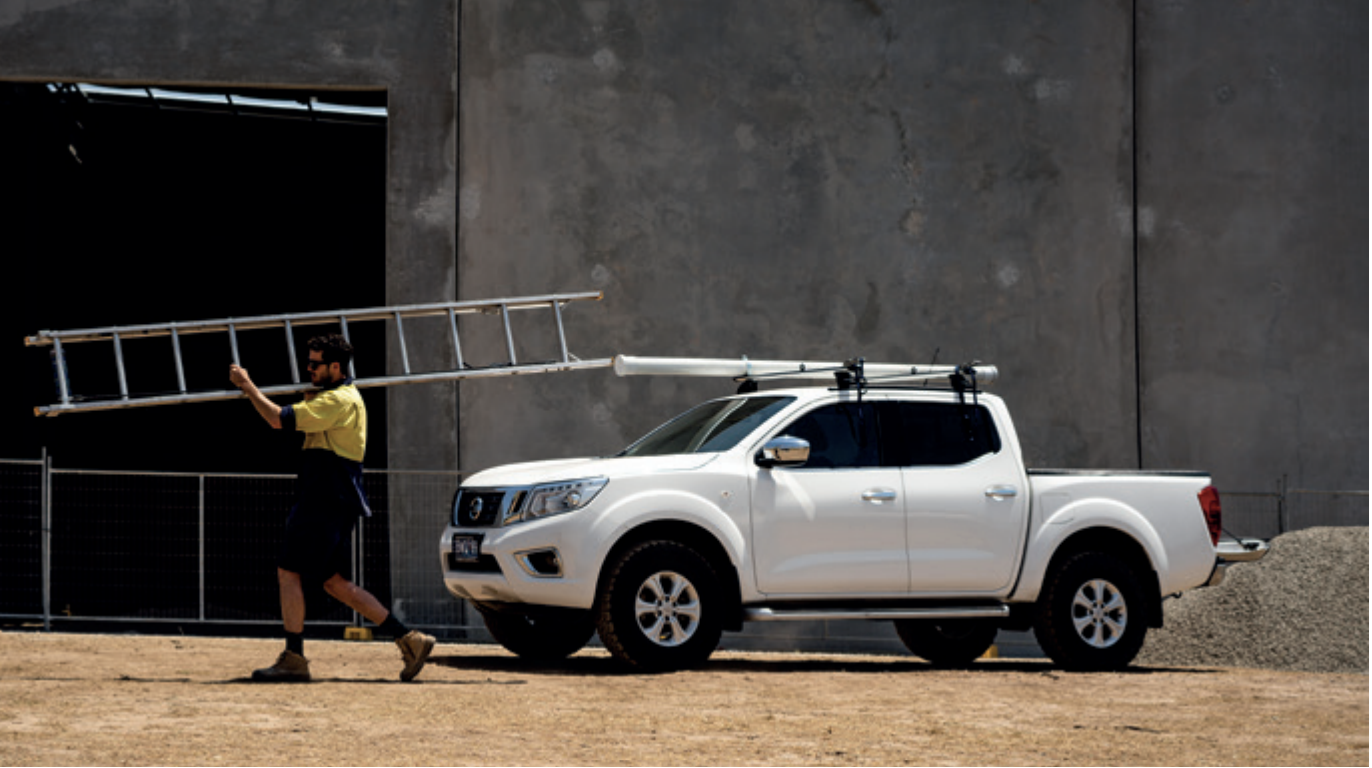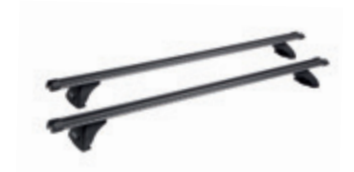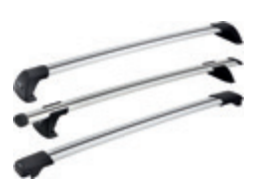Load Ratings Explained
Introduction
The purpose of this guide is to help you determine how much gear you can safely carry on top of your vehicle. If still in doubt, please drop us a line using our online contact form.

How Much Gear Can I Carry?
When calculating how much weight you can carry on top of your vehicle there are few key factors to consider:
- Load ratings for each component that makes up your carrying system
- Static vs dynamic forces
- On road vs offroad usage
Load Ratings
A typical Prorack carrying solution consists of:
- A vehicle roof
- A roof rack solution (typically consisting of crossbars, legs and a vehicle specific fitting kit), and possibly,
- A carrying accessory such as a roof box, kayak holder, etc.
Each of the items listed above has its own maximum load rating which dictates the heaviest load which that particular item can safely carry or hold. The actual amount you can carry on top of your vehicle will be dictated by the item that has the lowest load capacity. For example, if your roof rack solution has a product load rating of 100 kg, your roof box has a load rating of 90 kg and your vehicle’s roof has been rated by the manufacturer as being able to hold up to 80 kg, then the maximum you can have up top is 80 kg.
|
|
|
|
| Crossbar rated to carry 100 kg | Product rated to carry 90 kg | Roof rated to carry 80 kg |
In this case, the vehicle roof has the lowest rating. The component with the lowest rating dictates the maximum load rating of the system.
Remember, your carrying system will only be as strong as the weakest link involved.
Once the maximum load rating is known you can then calculate the amount of gear your system can carry. In the example above, we determined that the maximum load capacity was 80 kg. However, the amount of gear you can place up there will be somewhat less as you need to factor in the weight of your crossbar solution and roof box. So, if your crossbar solution and roof box each weigh 10 kg, you’ll have 60 kg left for your gear.
80 kg – 10 kg crossbar solution – 10 kg roof box = 60 kg
To find the load ratings for the various components of your particular system, consult the manufacturer’s instructions/ owner’s manual for your vehicle’s roof rating and refer to the product load ratings either on our website or in the instructions that came with the product you purchased.
Product load rating information for our vehicle fits in particular, can be found by searching for your vehicle and fit on our fit finder. However, if in any doubt always ask rather than guess.
Another point to remember is that load ratings for a system assumes load is evenly spread across that system. Where possible, keep this in mind when loading your vehicle as excessive loading on a point can cause damage and vehicle instability.
Static vs Dynamic Loads
Load ratings can be applied to static loads and dynamic loads.
What’s the difference?
Put simply, dynamic load ratings apply when you are driving your vehicle and there is motion, while static load ratings apply when your vehicle is stationary.
Why does this matter?
The load ratings that roof rack manufacturers apply to their products are dynamic load ratings, as people are usually interested in knowing how much gear they can safely carry while travelling. However, there may be times when it might be advantageous to know the static load rating of the carrying system, such as when considering the purchase of a roof top tent*. The good thing is, static load ratings are generally higher than dynamic load ratings.
Let’s assume the load rating for your carrying system is 80 kg and your crossbar solution weighs 10 kg. This means you can carry 70 kg of gear. If your roof top tent weighs 50 kg, you are within your limits by 20 kg (70 kg – 50 kg = 20 kg). So, what happens when you climb into your roof top tent? If you weigh 80 kg, using the dynamic load rating, you would naturally be well over the limit, but, don’t worry as this is when the static load rating applies.
As a general rule, in a static environment, the load rating increases by a multiple of three (3)†. So, if the dynamic load rating is 80 kg then the static load rating is deemed to be 240 kg (80 kg x 3).
In the case of our roof top tent scenario then you will have 100 kg left for your mattress, pillows, linen and whatever else you want to put in your tent.
240 kg static load rating – 10 kg crossbars – 50 kg rooftop tent – 80 kg person = 100 kg
* Roof top tents should NOT be placed on top of Clamp Mounted crossbar systems due to the nature of how these crossbars attach to the vehicle and the forces imposed on the system while driving.
† While the 3x multiplier is a good rule of thumb for roof rack components and most vehicle roofs, always refer back to your vehicle manufacturer to confirm the 3x multiplier for calculating the dynamic to static load rating also applies for your particular vehicle.

Offroad Use
All load ratings are applicable for driving on well-formed sealed roads with a smooth surface. Once you start travelling on forest service roads, access roads and other unpaved or poorly maintained environments, the maximum amount of gear you can carry reduces‡.
This is because the uneven terrain increases the amount of stress experienced by the various components of your vehicle and imposes far greater forces on your roof carrying system that can easily far exceed the maximum static load rating for your vehicle.
So, how do I calculate the offroad load rating for my Prorack carrying solution?
If you have a Clamp Mounted roof rack system a 50% load rating reduction will apply. For all other mount types and fits, the maximum load rating reduces by 33% as per the table below.
So, taking the 33% reduction as an example, if you’ve established your load rating to be 80 kg, that load rating would reduce to 53.6 kg once travelling offroad.
80 kg – (33% x 80 kg) = 53.6 kg
From there, simply deduct the weight of your roof rack solution from this figure to determine how much gear you’ll be able to safely carry.
| FITMENT/BAR TYPE | OFFROAD REDUCTION | |
|---|---|---|
| Clamp Mount (regardless of crossbar type used) |
|
50% |
| Heavy Duty |
|
33% |
| Classic Trade |
|
33% |
| Aero Flush, Aero Through, Aero Rail |
|
33% |
| Standard |
|
33% |
‡ Extreme four wheel driving such as rock crawling is not covered by Prorack’s warranty regardless of fit/bar type.
Alternative Mounting Options
Not attaching the roof racks to your vehicle’s roof? Don’t worry, in general, the same rules apply. Even if you are attaching your Prorack crossbar solution to any of the following, the same guidelines for calculating the maximum load you can carry on and offroad applies:
- Ute tub
- Ute tray
- Ute hard lid
- Canopy
However, be sure to speak to the manufacturer of your vehicle’s tub, tray, lid or canopy to find out both the load rating capacity of the product you are attaching to (once again, always apply the lowest rating) and to understand whether they have their own factors for calculating offroad and static load ratings.
Key Takeaways
- The weakest link in your carrying system (which typically includes your vehicle’s roof, your crossbar solution and any accessory you might have to carry your gear in) determines your maximum load rating
- Static loads can increase by up to a multiple of three (subject to confirmation by your vehicle manufacturer)
- Roof top tents should not be placed on Clamp Mounted roof rack systems
- Once you go off a sealed road, your load rating halves (drops by 50%) if you have a Clamp Mounted roof rack system. All other roof rack systems can expect their load rating to reduce by 33%
Click here to download this information as print-friendly PDF








